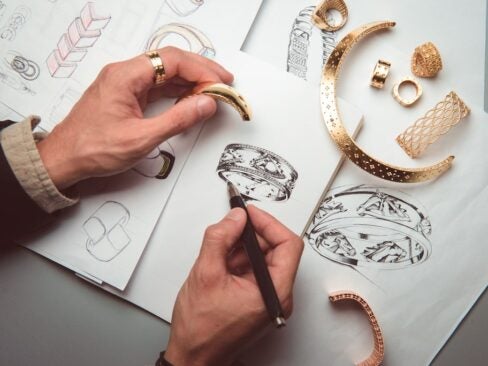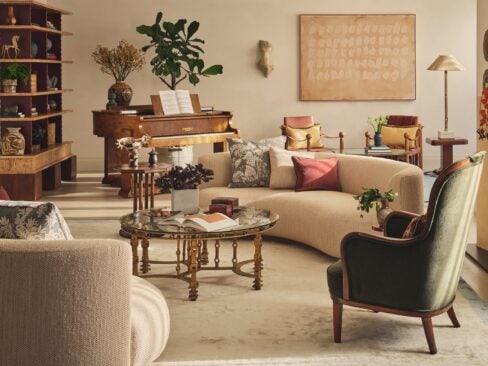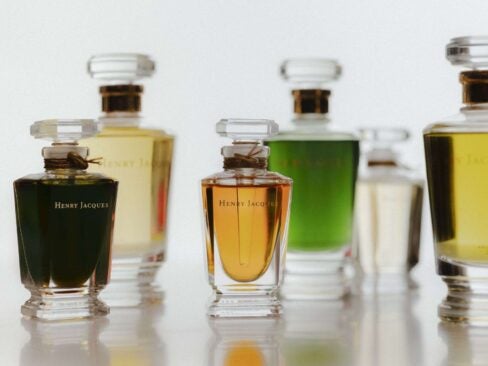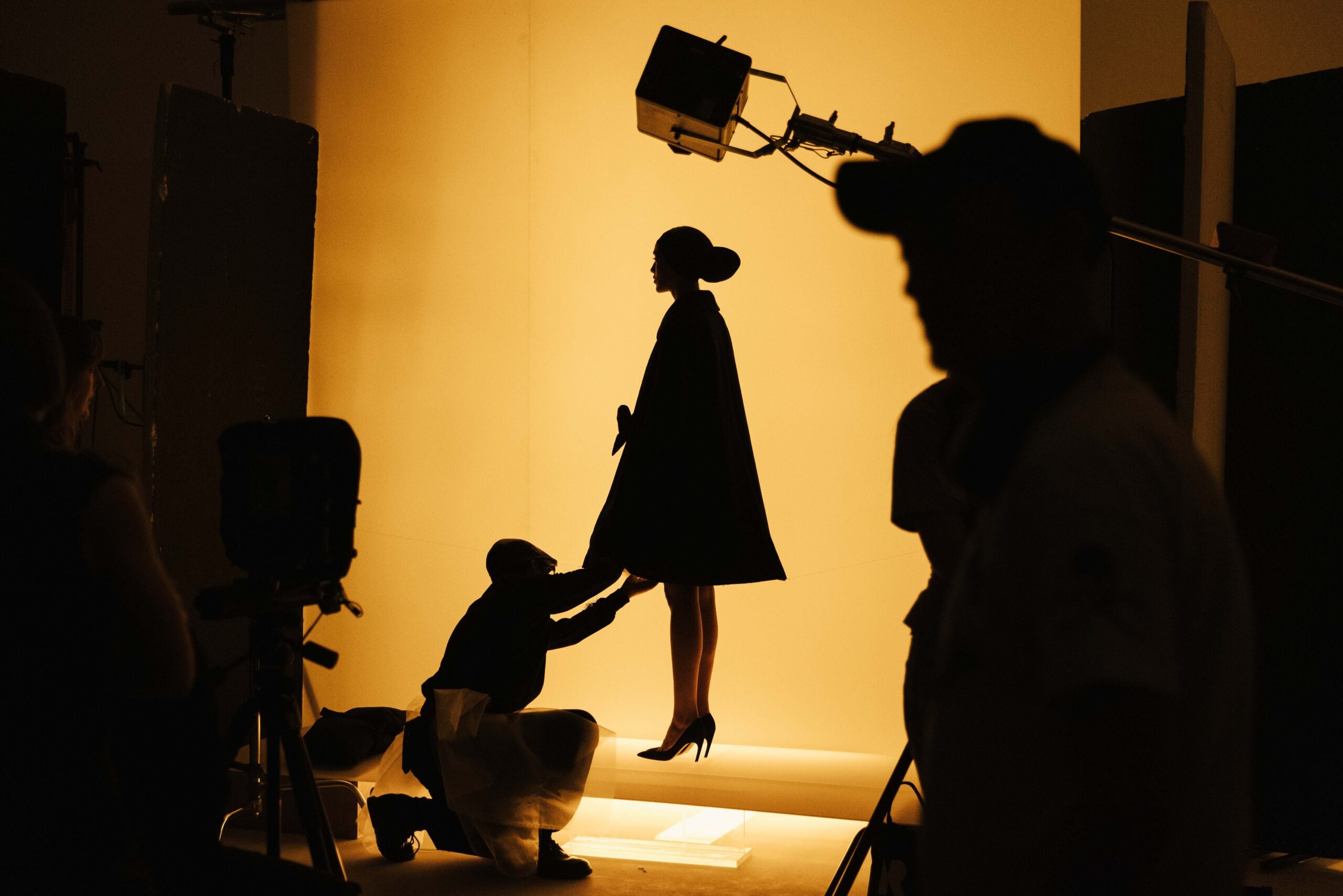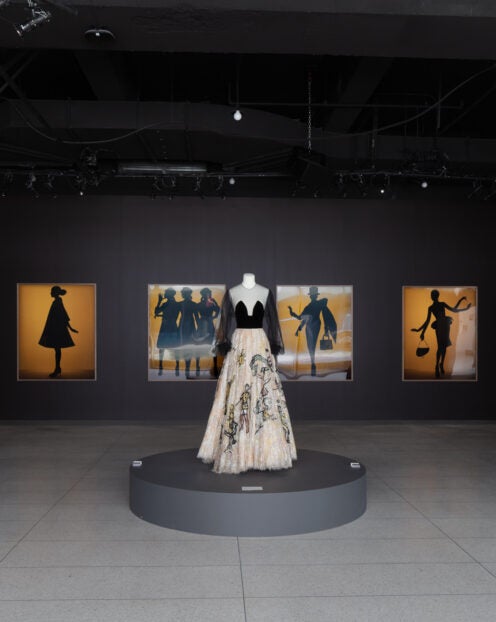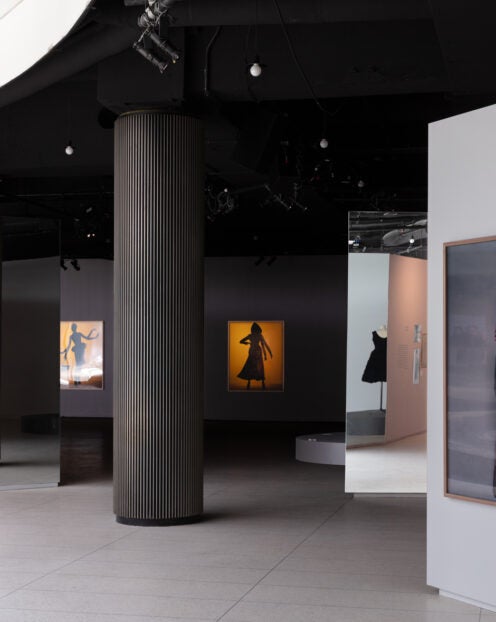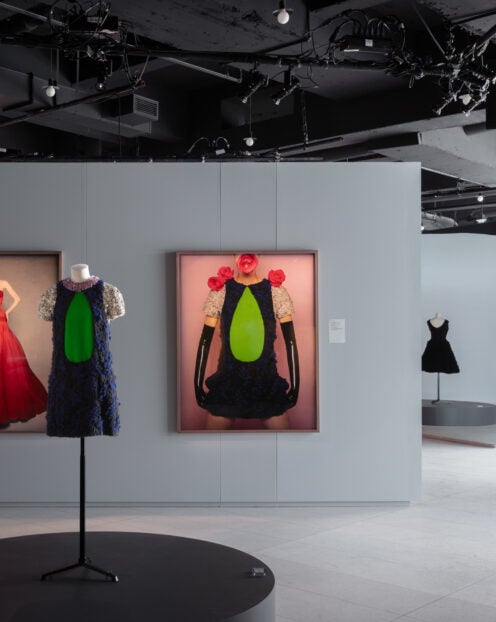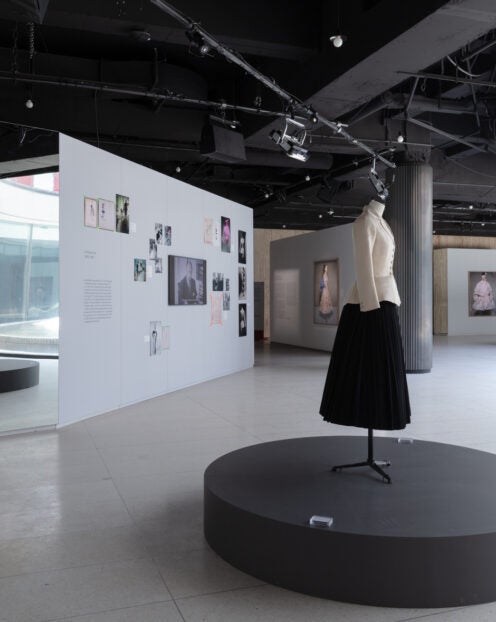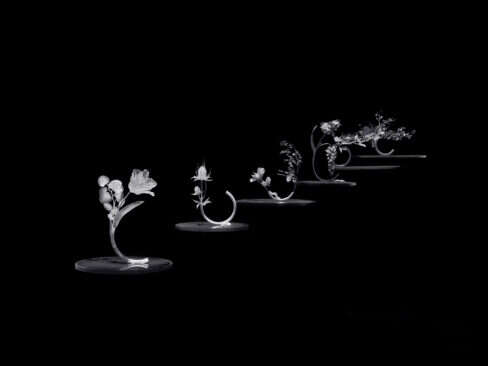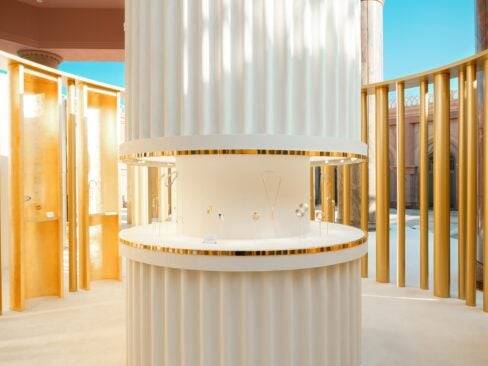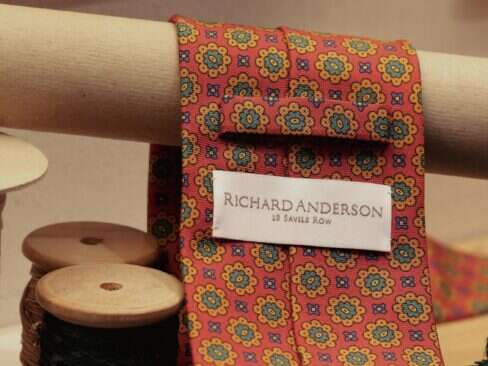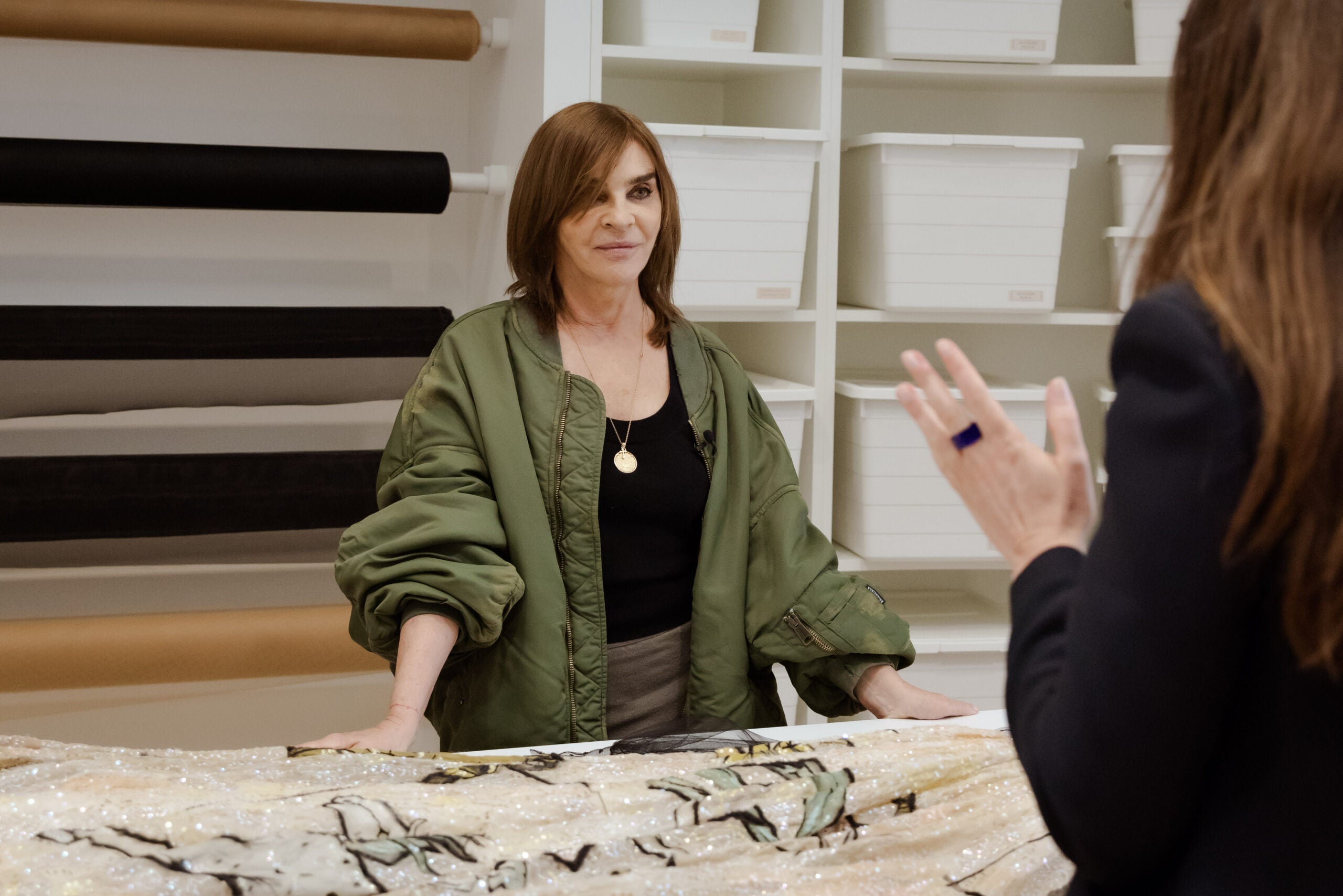
Fashion has always had a good sense of timing. The day before I speak to Carine Roitfeld about her new exhibition, UBS House of Craft x Dior, the news breaks that Maria Grazia Chiuri is stepping down as creative director. By the time I join a video call with the house’s longtime collaborator and the exhibition’s photographer, Brigitte Niedermair, a few days later, Jonathan Anderson has been confirmed as Dior’s new artistic director – the first to oversee both womenswear and menswear since Christian Dior himself.
Moments of change often come with a sense of reflection. And whether by design or design’s uncanny instinct, the timing feels almost too perfect for the unveiling of UBS House of Craft x Dior. Held in New York, this public exhibition brings together the work of all seven of Dior’s past creative directors for the very first time, spanning from Christian Dior to Maria Grazia Chiuri.
Curated by Roitfeld and captured through Niedermair’s lens, the showcase offers a rare look at the artistry and evolution of couture, all through the prism of Dior’s ever-shifting identity. For the first time, these eras under all of Dior’s different creative visions are united in a single visual language – bold, intimate and unmistakably feminine. At the heart of the exhibition is a celebration of craftsmanship, legacy and collaboration: between designer and stylist, garment and image, and, most poignantly, between the two women who brought this story to life.
Roitfeld, who was editor in chief at French Vogue for more than a decade before founding the magazine CR Fashion Book in 2012, has had a long-standing relationship with Dior, working closely with every creative director since Gianfranco Ferré. But whether you believe in the cosmic or kismet, Roitfeld’s connection to Dior feels almost predestined. Born in Paris just across from 30 Avenue Montaigne (home to Dior’s flagship), she remembers that even as a baby, she was dressed in Baby Dior. “I think it was a sign,” she says. Growing up in a city saturated with fashion, Roitfeld reflects that being Parisian meant fashion was almost in her DNA: “You understand, maybe better than other countries, what is good too. What is fashion?”
For longtime Dior photographer Brigitte Niedermair, the relationship with the house runs deep, too. Having worked with Dior for over 12 years, she considers herself part of the extended French fashion family despite not being French herself. Niedermair recalls how the idea for the UBS House of Craft exhibition came about: “Carine came up to me and said, ‘What do you think about working together for UBS House of Craft?’ And I said, ‘This is a wonderful idea’.” She describes the project as an opportunity to explore the legacy of Dior’s creative directors over its 75-year history: “Christian Dior is the Father, and then they have seven children. And so this was the initial idea to try to create an exhibition for this, to highlight the couture in Dior through time, through my eye and through the eye of Carine.”

Working together on the UBS House of Craft exhibition is both a personal and professional union for Roitfeld and Niedermair, a partnership rooted in years of close collaboration. Niedermair recalls their very first project together in New York: “For Carine’s first issue of CR Fashion Book, I remember that day she became a grandmother.” The moment feels emblematic of their deep connection: “We have had this really close relationship for such a long time. And I love Carine. I mean, she’s an outstanding, out-of-the-class talent, absolutely.”
Despite their closeness, their creative processes contrast intriguingly. Roitfeld describes herself as spontaneous and intuitive: “I don’t think so much in advance… I’m someone very spontaneous, I just jump on it.” Niedermair, on the other hand, approaches the work with an architectural precision, often sketching her vision before the shoot. “I draw before. I always draw, and normally we do what I draw, but most of the time the drawing comes alive,” she explains. “By drawing, you have a more clear understanding of what you want to do.”
Bringing these two creative worlds together under the Dior banner reveals not only their personal histories with the brand but also how their distinct approaches shape its identity. Roitfeld reflects on how much of herself is woven into the images and styles of the House of Craft exhibition: “There was a lot of Dior, of course, but there was a lot of me too, in the pictures, in the style of the clothes. If you know me, you can recognize my little ideas. It’s not much, just simple little touches that change the beat of a look.”
Known for her signature all-black ensembles, Roitfeld’s aesthetic has helped cultivate and define what we now think of as the quintessential French style – oh so effortlessly chic with a rebellious edge. This personal imprint is clear throughout the exhibition, where her subtle yet impactful touches reshape iconic Dior garments. Niedermair recalls one striking moment during the exhibition’s creation: “We had this same garment, and Carine wanted absolutely the leather jacket on it. So we put this leather jacket on this fantastic classical garment.”
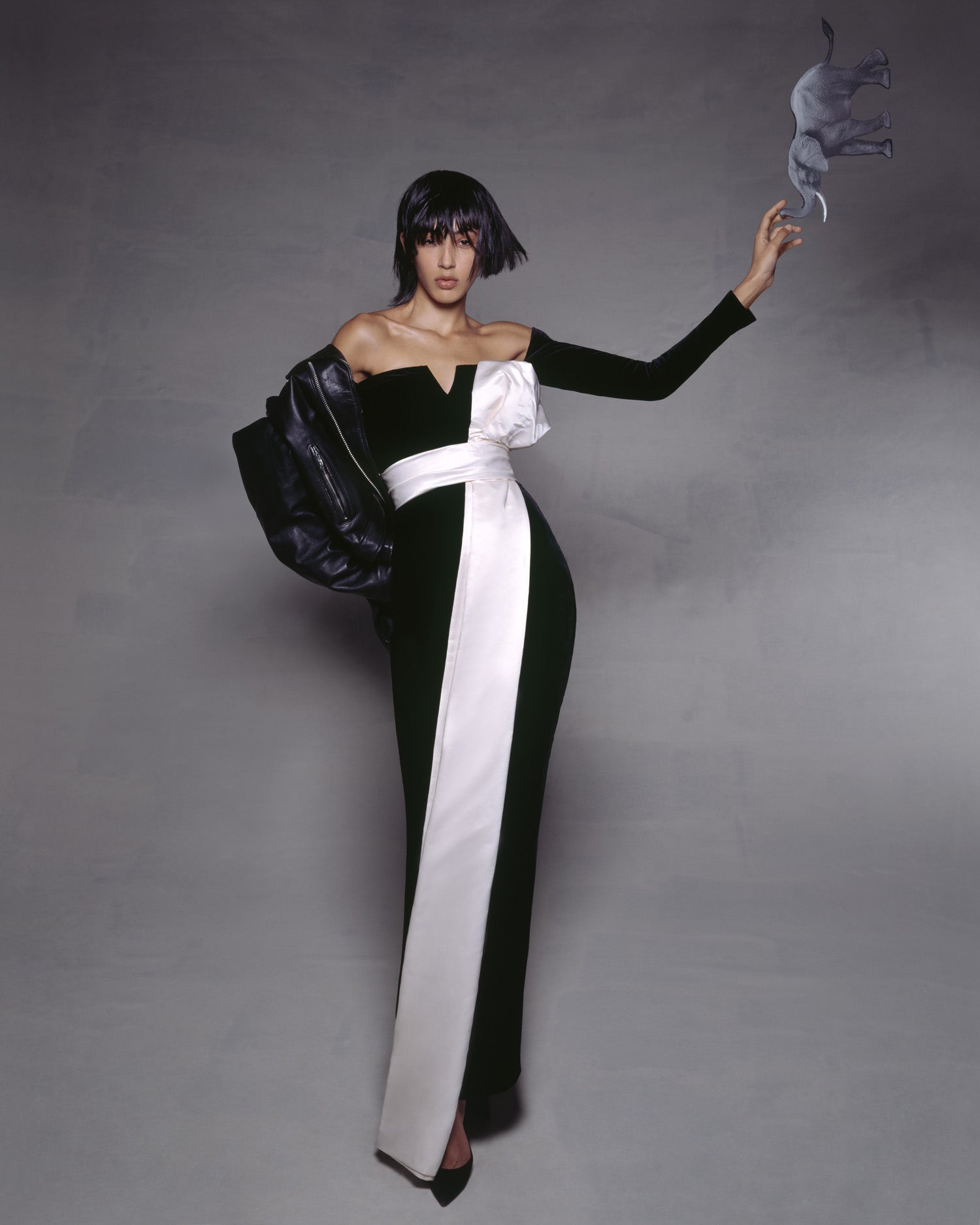

This act of layering – a timeless Dior piece reframed by Roitfeld’s contemporary vision – exemplifies how past and present collide in the exhibition, reinterpreting iconic images while paying homage to their historical significance. Together, they reveal the strength of Dior’s DNA, continuously evolving yet unmistakably pure.
That clarity of identity – what Roitfeld calls “the meaning of all the designers for one brand” – is what makes UBS House of Craft x Dior feel so rare. For the first time, the full scope of Dior’s creative evolution is laid out in a single, unified narrative. Each designer brought something radically their own to the house, yet seeing their work side by side reveals an unexpected harmony. “You will discover a lot of things from the past of Dior I didn’t know,” Roitfeld admits. “But you understand the meaning of all the designers for one brand. I think it is quite exceptional to have all these talented designers finally survive well together, you know? I think it was very difficult.”
The sense of difficulty in this exhibition – logistical, artistic and emotional – is also part of what gives the UBS House of Craft x Dior its sense of scale. Niedermair reflects on the complexity of assembling the show: “It was a huge production. It took us a while to choose all the right garments, because some of them, you know, are in an exhibition, some of them are in other places. So it was not so easy to have them all together in one place at the same moment.”
But when it finally came together, the feeling was electric. “We already felt the historical moment,” she says. “It’s very hard to describe… it was a moment of total excitement when you see them all coming together – and they talk. One is talking to the other.”
That idea of garments in conversation perfectly captures the spirit of the exhibition — a dialogue not only between designers and eras, but also with the very origins of the house itself. At its core is Christian Dior, the father of the brand’s iconic identity. As Niedermair explains, Dior “gave a precise line, a clear idea of what the house should be.” She reflects, “Maybe he didn’t expect it would go this far, but in the end, he’s still here, because this is his base – it’s eternity.”
This enduring foundation, she adds, transcends any one creative director. “Christian Dior’s legacy is stronger than each individual designer. It’s full of history. Each designer adds something, but the history is bigger and wider, shaped by many souls who have worked on Dior – the many lives contributing to its evolution.”
For Niedermair, this connection is deeply personal: “I always say I know Christian Dior. It’s impossible to know him fully since he’s not here anymore, but I feel related to him. I can’t explain it, but I sense the energy he gave to his creations. I always go back to that energy and try to infuse it into every image I create, so I’m truly connected to this heritage.”
As the exhibition celebrates the house’s rich past, it also invites reflection on its present and future. Niedermair notes how Maria Grazia Chiuri’s tenure marked a profound shift in Dior’s portrayal of women. “Before Maria Grazia, there was a different way to look at women. Now, I think this has changed completely.” She traces the evolution from the theatrical grandeur of John Galliano to the minimalist elegance of Raf Simons, highlighting how each director brought a distinct lens to femininity.
Of course, in this current moment in time, it’s impossible to reflect without questioning the future of what is to come for the brand, and looking forward, there’s intrigue about what Jonathan Anderson’s appointment might mean for Dior’s identity. “Now we’re going to enter an era where maybe masculine and feminine will harmonize. It’s also the first time this is going to happen at Dior,” Niedermair adds with a note of anticipation. “It’s going to be interesting to see how JW Anderson interprets this balance – where only the feminine was before, now maybe he’ll join both sides. Who knows? Let’s be surprised.”
The UBS House of Craft x Dior exhibition and public cultural programming runs from June 6, 2025, through June 8 at 28 Pine Street in New York City. Registration is free and open to the public here.


